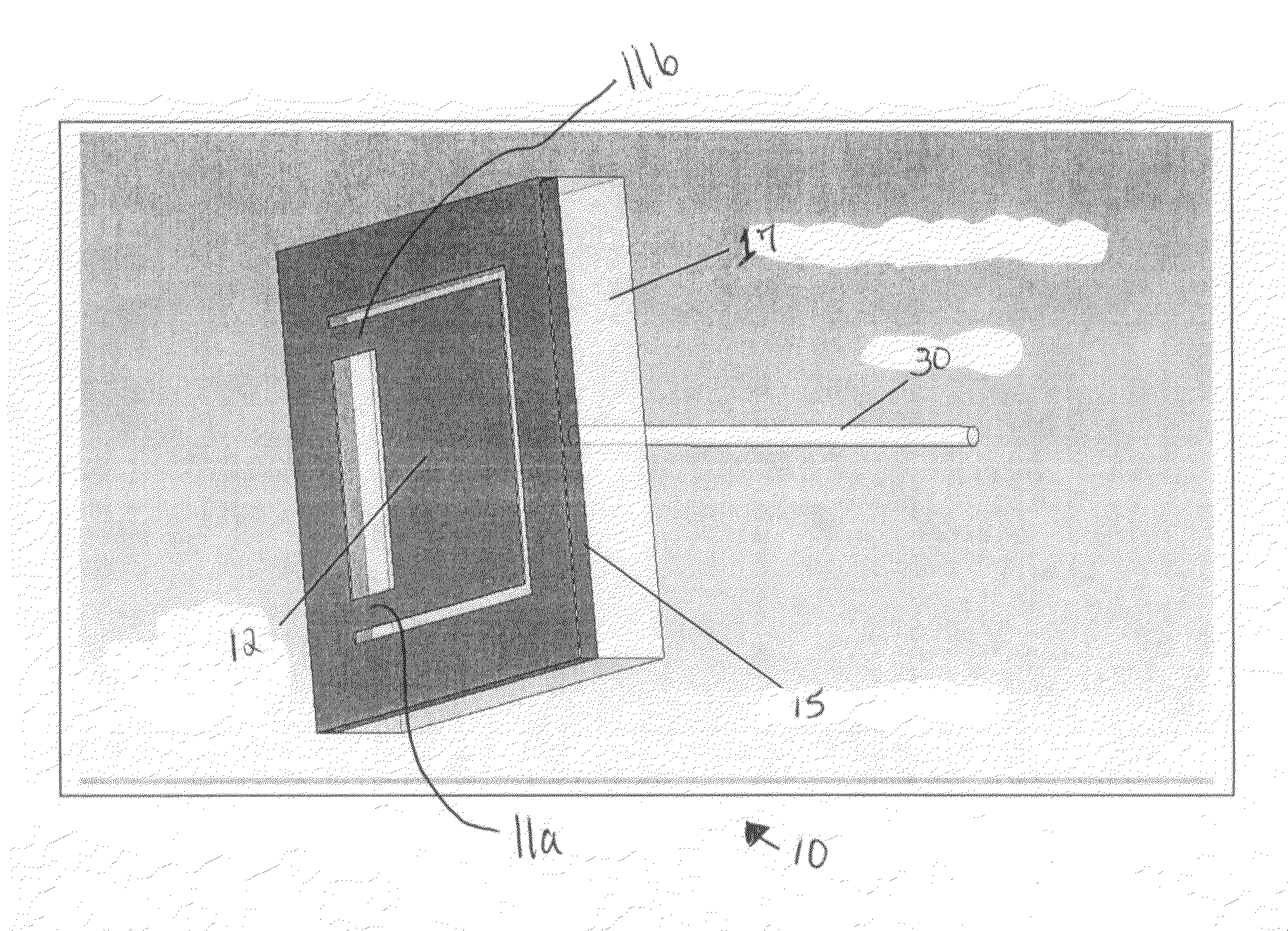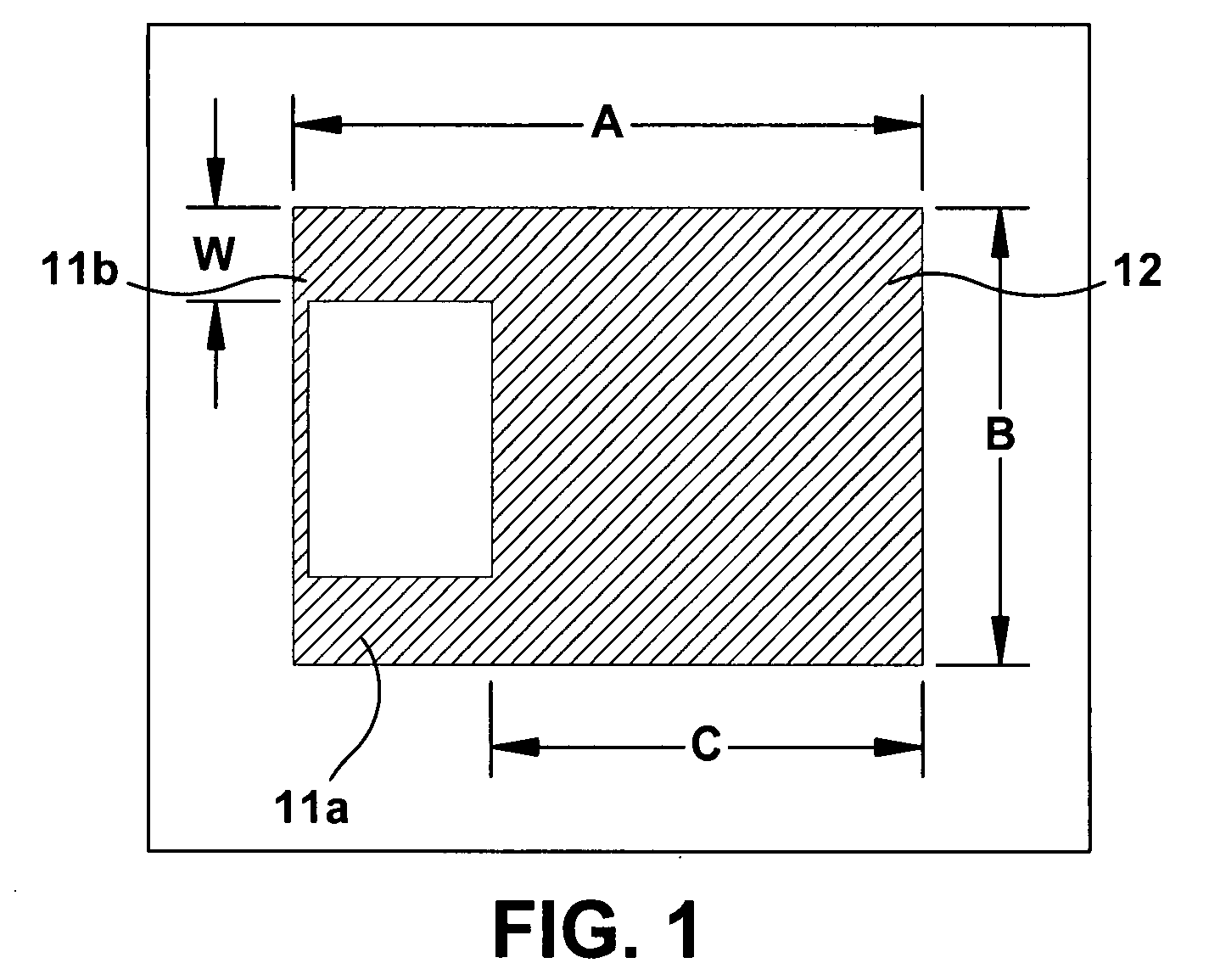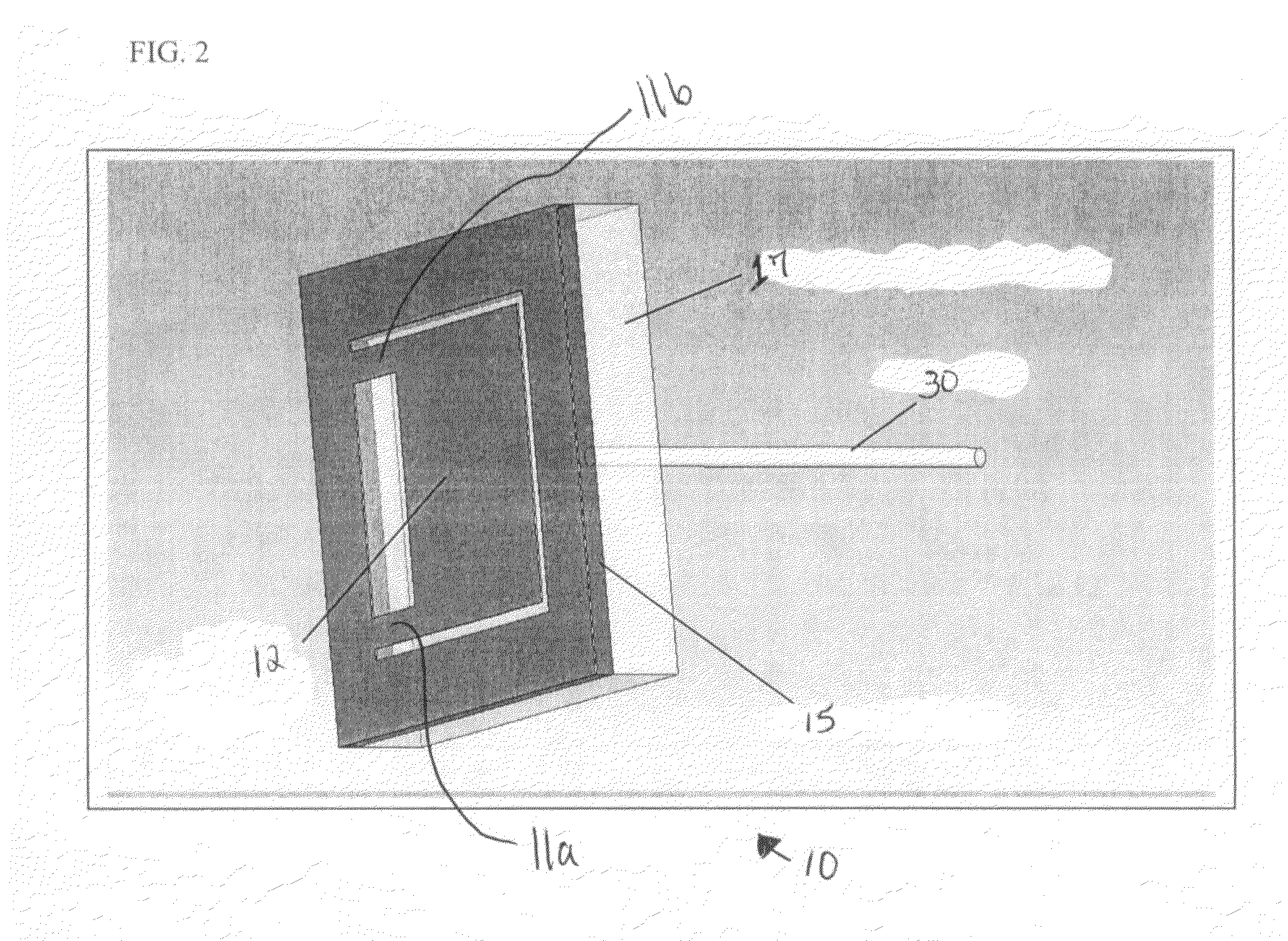Fiber optic seismic sensor based on MEMS cantilever
a technology of seismic sensors and fiber optics, applied in the direction of speed/acceleration/shock measurement, acceleration measurement using interia forces, instruments, etc., can solve the problem of accelerometers having an upper limit on the operating temperature of 75° c, spring deflection,
- Summary
- Abstract
- Description
- Claims
- Application Information
AI Technical Summary
Problems solved by technology
Method used
Image
Examples
case 1
[0056]Consider Case 1
R3=0.037R4=0.33
P−V=0.168 (8)
case 2
[0057]Consider Case 2
R3=0.4R4=0.33
P−V=0.346 (9)
[0058]The modulation contrast P−V in Case 2 is more than twice that in Case 1. It is important to note that the “zeroes” in the interference pattern for Case 1 in FIG. 3 may not actually be zero due to electronic noise from the detectors and amplifiers. Assume equivalent electronic noise for Cases 1 and 2. Then Case 2 is preferred as a result of improved modulation contrast and heterodyne gain from the signal reflected from the reflective surface R3.
[0059]The analysis below demonstrates how spurious reflections can be limited to ≦45 dB (3.2×10−5) below the desired reflected power from the reflected surfaces R3 and R4, respectively. The fundamental problem in maintaining relatively small reflections is locating a bonding agent that can be used between the optical (input) fiber 30 and the glass wafer 17 that may be a borosilicate substrate. For example, locating a bonding agent that has an index of refraction midway between the refractiv...
first embodiment
[0090]MEMS packaging for this application is important for success. Several embodiments for packaging are contemplated. However, one of ordinary skill in the art will appreciate that other packaging can be used for the present invention. In a first embodiment, the packaging is a single unit package. Referring to FIG. 2, the CTE (coefficient of thermal expansion) of silicon and borosilicate are substantially similar so that the two materials can be bonded and hermetically sealed. If the sensor 10 is packaged in a metal housing and the lid 40 is borosilicate, the borosilicate lid 40 may be bonded to a metal base plate. In an embodiment, the packaging is a triaxial package. The important issues with a triaxial package are the perpendicularity of the three orthogonal axes and the fiber bend radius. The objective is to hold the assembly in a cylindrical containment tube with as small a diameter as possible. The sensor containment tube must be pressure sealed against the high-pressure env...
PUM
 Login to View More
Login to View More Abstract
Description
Claims
Application Information
 Login to View More
Login to View More - R&D
- Intellectual Property
- Life Sciences
- Materials
- Tech Scout
- Unparalleled Data Quality
- Higher Quality Content
- 60% Fewer Hallucinations
Browse by: Latest US Patents, China's latest patents, Technical Efficacy Thesaurus, Application Domain, Technology Topic, Popular Technical Reports.
© 2025 PatSnap. All rights reserved.Legal|Privacy policy|Modern Slavery Act Transparency Statement|Sitemap|About US| Contact US: help@patsnap.com



